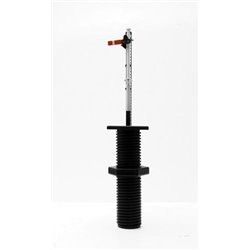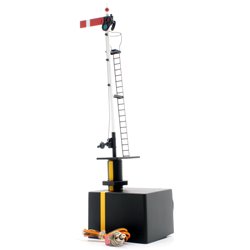Inevitably there is a need to provide lubrication to the wheels of locomotives and rolling stock as they operate on a...
No products
Product successfully added to your shopping cart
There are 0 items in your cart. There is 1 item in your cart.
Search Tips
Christmas and New Year
We are dispatching orders every weekday apart from Christmas Day, Boxing Day and New Year's Day.
If you order is time critical, select next day delivery at checkout.
The shop in Sandown is closed from 25th December, reopening on 30th December.
Why are railway signals upside down compared to road traffic lights?
There are a couple of reasons why railway signals are oriented upside down compared to road traffic lights:
Historical convention
The orientation of railway signals dates back to the early days of rail transport in the 19th century. The convention was established that a horizontal signal arm meant "stop" and a vertical or raised arm meant "proceed." This is the opposite of road traffic lights where red is stop and green is go.
The reasoning behind this was that raising the signal arm up allowed it to be clearly visible to train drivers coming down the tracks. A lowered horizontal arm cutting across their line of sight was an unmistakable stop signal.
Line of sight
Railway signals need to be visible from a long distance to allow trains time to brake. Having the "go" signal in a raised vertical position helps make it stand out more prominently against the backdrop when viewed from far away.
Road traffic lights, on the other hand, are viewed at closer ranges so the line of sight reasoning doesn't apply in the same way.
Gravity fail-safe
If a railway signal cable or mechanism fails, the horizontal arm will automatically drop down to the stop position due to gravity. This built-in fail-safe adds an extra layer of safety. Note that due to the various designs, some companies did not provide the fail safe. The major companies where this fail safe worked were LNER, LBSCR (later SR) and LSWR.
So in summary, while counterintuitive compared to road signals, the upside-down orientation of railway signals emerged from a combination of historical convention, sighting requirements, and intentional safety design for the railway environment. The opposite configuration stuck as standards evolved over time.
Click here to receive the tips weekly in your mailbox. You can unsubscribe at any time.










